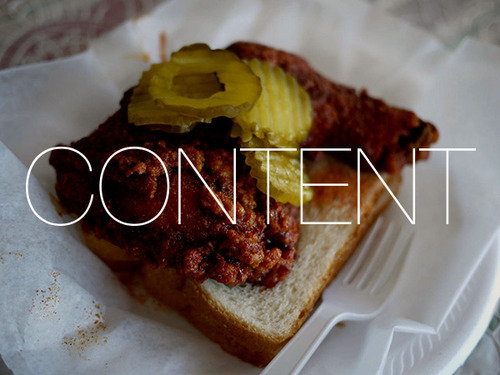Apps Are Content, Too
There is a word that Apple’s presenters use frequently when explaining new products: “content." It makes many people cringe to hear it used so glibly, like enduring a marketing team parrot “Verticals! Verticals!" ad nauseam. Content is Apple’s elevated term for “stuff." Content can be photos of a vacation, an episode of a tv show, or a page of text. Content is what the user wants to see.
Apps are content, too. Apple used to think so. In a promotional video in 2011, Jony Ive praised the design of the then new iMac. It was the first to eliminate the aluminum bezel from the sides of the display. Ive praised the iMac for having nothing to distract the user from their content. The implication was that “content" meant everything on the display, from the menu bar to the dock, and all points between. The hardware was the potential distraction.
On Monday, Apple revealed a polarizing new design for iOS 7. Those of us in the iOS design community are still reeling from the changes. Apple has ripped the rug out from under us, or as Scott Jackson put it over bourbon yesterday, Apple “moved the goalposts overnight."
With iOS 7, Apple has issued a decree: Apps are no longer content. This is the epicenter of the seismic activity that has shaken those of us who make apps for a living. Some of us gripe about the surface-level changes like a rigid adherence to a flat design aesthetic or borderless buttons, but these are superficial changes. The deeper shock is that iOS 7 no longer embraces the variety and richness of the third-party apps that have helped popularize the platform.
Here is a quote from one of the iOS 7 marketing pages:
Conspicuous ornamentation has been stripped away. Unnecessary bars and buttons have been removed. And in taking away design elements that don’t add value, suddenly there’s greater focus on what matters most: your content.
The implication here is that third-party apps that pride themselves on tasteful toolbars and easy-to-recognize buttons don’t add value for the user, that the app itself isn’t content.
Bollocks.
User interfaces are as just as much a part of the experience of an app as the text, photos, and videos that it displays. You may remember John Gruber’s quip about Twitter apps being a UI design playground. All Twitter apps display the same content, but not all Twitter apps are the same. Tweetbot’s shiny buttons and clicky sound effects have as much to do with its popularity as its functional design. Tweetie, Twitterriffic, Hootsuite, Tweetdeck were all different, and all were popular, even if no single app appealed to the tastes of all users (which would be impossible). Design is more than just how something works. It’s also how it looks. Would you rather buy a black or a brown leather jacket. Why?

The original and best: Prince’s Hot Chicken in Nashville.
The best metaphor for understanding Apple’s misguided strategy with iOS 7 is a restaurant. Food alone is not the content of a restaurant. The decor on the walls, the uniforms worn by the waitstaff, the ambient music, the quality of the flatware — all of these elements add value to the experience of a meal. A dark pub, a smoky Indian barbecue joint, a campy vintage food truck — every detail of a restaurant matters. If iOS 7 was a restaurant, it would be, in Neven Mrgan’s words, a hospital cafeteria:
Waitstaff wear white. The whole restaurant is white. No music. Enjoy.